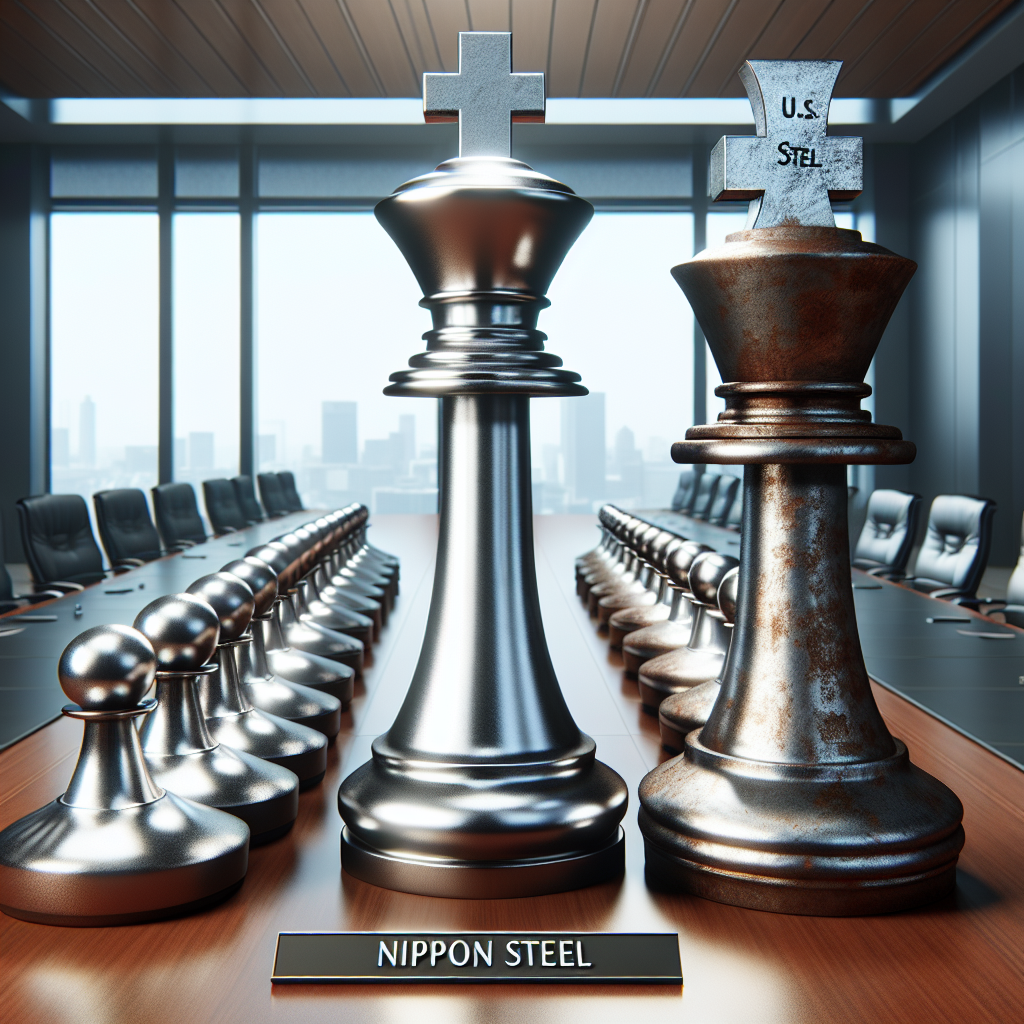Nippon Steel’s $15 Billion Bid for U.S. Steel: An Analyst’s Perspective
The recent $15 billion bid by Nippon Steel to acquire U.S. Steel has stirred considerable interest among investors and analysts alike, raising questions about both the immediate implications and long-term benefits of such a significant merger in the steel industry.
The Context of the Acquisition
Nippon Steel, Japan’s largest steelmaker, is seeking growth avenues outside its home market due to dwindling domestic demand. This acquisition, backed by President Donald Trump but pending final approval, could establish the newly formed entity as the world’s third-largest steel producer, ranking just behind China’s Baowu Steel Group and Luxembourg’s ArcelorMittal, according to data from the World Steel Association.
Upon the announcement of the intended merger, shares of U.S. Steel surged by 21%, while Nippon Steel’s stock saw an increase of 7%. While these initial reactions from the market are promising, analysts are carefully scrutinizing the potential ramifications of this deal.
Potential Economic Impact
President Trump asserted that the merger could create at least 70,000 jobs and infuse an additional $14 billion into the U.S. economy, predominantly through Nippon Steel’s new investments. While these figures sound optimistic, the feasibility of such investments and their timely execution remains to be seen. As noted by Fiona Deutsch of the Australasian Centre for Corporate Responsibility (ACCR), concerns have arisen regarding Nippon Steel’s commitment to investing up to $4 billion in a coal-dependent blast furnace at a time when the global steel sector is increasingly pivoting towards low-carbon alternatives.
Shareholder Sentiments and Concerns
Investor sentiments are mixed. On one hand, investors are hopeful about the merger, which is poised to enhance Nippon Steel’s global output capacity from 63 million metric tons to more than 100 million metric tons yearly. On the other hand, there are voices within the investment community expressing reservations about the high premium offered per share, the potential for capital dilution if new shares are issued, and concerns surrounding Nippon Steel’s significant investment commitments amidst an industry landscape that is undergoing transformation toward sustainability.
Additionally, the performance of U.S. Steel has raised eyebrows — its recent net loss for the January to March period may signal challenges that the newly formed company could face in realizing a return on investment in the short term. Analyst Shinichiro Ozaki from Daiwa Securities highlighted financing concerns, indicating that the market may be apprehensive about both the current health of U.S. Steel and the overall steel market dynamics.
Strategic Reasons Behind the Acquisition
With weaker domestic demand pushing Japanese steel producers like Nippon Steel to reconsider their business strategies, extending their operations overseas seems essential. The appeal of U.S. Steel lies not only in increasing output but also in gaining leverage against the tariffs imposed on steel imports from Japan, which could insulate Nippon Steel from some market volatility.
Furthermore, the opportunities in India and the United States, traditionally protected from China’s substantial steel exports due to existing trade barriers, present a lucrative growth opportunity for Nippon Steel. Analysts believe that if U.S. demand begins to recover, this acquisition could yield positive long-term results, despite its immediate challenges.
Conclusion: A Cautious Outlook
The $15 billion bid for U.S. Steel is undoubtedly a significant move for Nippon Steel. However, potential investors must weigh the high costs of acquisition, strategic effectiveness, and the risk of dilution against rising demand projections in the U.S. market. Given the unpredictability of the steel consumption landscape, particularly following recent declines, serious investors should adopt a cautious approach, focusing on long-term growth while carefully monitoring immediate financial implications.
Ultimately, as Nippon Steel navigates this pivotal moment, stakeholders will want to stay informed and ready to act, tapping into both the challenges and advantages this merger may present in the ever-evolving global steel marketplace.
